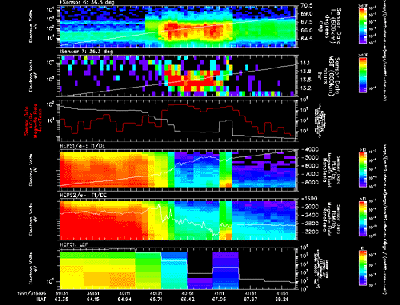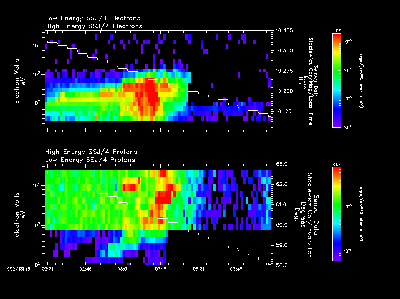 |
 The Southwest Data Display and Analysis System (SDDAS)
is a flexible multi-mission/ multi-instrument software
system intended to support space physics data analysis.
The utility of the system relies on the availability of
low-cost workstation technology, an operating system that
runs on different hardware platforms (UNIX), and the
proliferation of the Internet. The development of the
SDDAS is driven from the bottom up by the user community
rather than by government organizations. An interesting
characteristic of the SDDAS is that it allows data in
distributed archives, from many different satellites and
other sources to be displayed and analyzed using a
diverse set of graphical applications. Data can be
ordered and delivered over the Internet independent of
the archive location and the nature of the archive
storage. The present list includes data from TSS, UARS, AMPTE, ARIA, DE, DMSP, ISEE, SPACERAD, INTERBALL,
IMP, GeoSolarInd, CosmicRayMon, ASTRID, CLUSTER-II, MARS, PROGNOZ, VIKING, FREJA, ISIS, and NOAA-12.
The Southwest Data Display and Analysis System (SDDAS)
is a flexible multi-mission/ multi-instrument software
system intended to support space physics data analysis.
The utility of the system relies on the availability of
low-cost workstation technology, an operating system that
runs on different hardware platforms (UNIX), and the
proliferation of the Internet. The development of the
SDDAS is driven from the bottom up by the user community
rather than by government organizations. An interesting
characteristic of the SDDAS is that it allows data in
distributed archives, from many different satellites and
other sources to be displayed and analyzed using a
diverse set of graphical applications. Data can be
ordered and delivered over the Internet independent of
the archive location and the nature of the archive
storage. The present list includes data from TSS, UARS, AMPTE, ARIA, DE, DMSP, ISEE, SPACERAD, INTERBALL,
IMP, GeoSolarInd, CosmicRayMon, ASTRID, CLUSTER-II, MARS, PROGNOZ, VIKING, FREJA, ISIS, and NOAA-12.

Rather than emphasizing the indexing of data by ancillary characteristics, the SDDAS stresses the ability to visualize and analyze data quickly. The SDDAS has provided the developers with many useful lessons learned in the arena of space physics data systems. The developers feel that a strong case can be made that large, centralized facilities offering a fixed set of abilities will not adequately support space science in the 1990s and beyond. The SDDAS approach is adaptable to advances in computer technology, thus giving the scientist a toolbox that can bridge the gap between data and scientific insight. |
Most of the development of SDDAS is funded through various NASA contracts and
grants where Dr. David Winningham is the Principal Investigator at Southwest
Research Institute (SwRI) of each of the projects. Work done under NASA
contract NAS8-36840 was done for Marshall Space Flight Center. Other NASA
projects which support SDDAS development are: |
|
[Home]
[About]
[Links]
[Sample Plots]
[SDDAS Install] [User's Guide] [Programmer's Guide] [Tutorials] [Contact] |